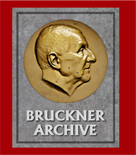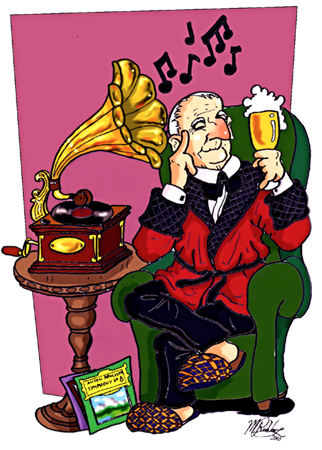Biography of Anton Bruckner
A Musical Genius of the Romantic Era
Early Life and Education
Anton Bruckner was born on September 4, 1824, in Ansfelden,
a small village in Upper Austria. He was the eldest of eleven children in a
family with a rich musical heritage. His father, a schoolmaster and organist,
recognized Anton's musical talent early on and provided him with his initial
education in music.
At the age of 13, Bruckner was sent to the Augustinian
monastery of St. Florian as a choirboy. There, he received a thorough education
in music and was introduced to the sacred music tradition that would profoundly
influence his later works. After completing his studies at the monastery, he
trained as a schoolteacher in Linz, following in his father's footsteps.
Career Beginnings
Bruckner began his professional career as a schoolteacher
and organist. In 1848, he was appointed as the organist at St. Florian, where
he continued to refine his skills and immerse himself in the rich musical
environment of the monastery. His exceptional talent as an organist earned him
a reputation that eventually led to his appointment as the cathedral organist
in Linz in 1855.
During his years in Linz, Bruckner studied counterpoint and
composition under the tutelage of Simon Sechter, a renowned music theorist.
This rigorous training laid the foundation for his complex and innovative
compositional style. In 1861, he completed his first major work, the
"Messe für den Gründonnerstag" (Mass for Holy Thursday).
Vienna and the Symphonies
Bruckner's move to Vienna in 1868 marked a significant
turning point in his career. He was appointed as a professor of harmony and
counterpoint at the Vienna Conservatory and later became the organist at the
Imperial Court Chapel. Despite facing initial resistance from the conservative
Viennese music establishment, Bruckner persevered and began composing his
monumental symphonies.
His symphonies are characterized by their grand scale,
emotional depth, and intricate contrapuntal structures. Some of his most
notable symphonies include Symphony No. 4 in E-flat major,
"Romantic," and Symphony No. 7 in E major, which brought him
widespread acclaim. Bruckner's symphonies often drew inspiration from his
devout Catholic faith and the natural landscapes of Austria.
Personal Life and Challenges
Bruckner's personal life was marked by both triumphs and
struggles. He never married, dedicating his life entirely to his music and
religious devotion. His deeply pious nature and modest demeanor earned him the
respect and admiration of his students and colleagues.
However, Bruckner also faced significant challenges,
including bouts of self-doubt and depression. His music was often criticized
for its unconventional structure and length, leading to periods of professional
isolation. Despite these obstacles, Bruckner remained steadfast in his
commitment to his artistic vision.
Legacy and Influence
Anton Bruckner passed away on October 11, 1896, in Vienna.
He left behind a remarkable legacy that continues to influence composers and
musicians to this day. His symphonies and sacred choral works, including the
"Te Deum" and the "Masses," are celebrated for their
profound spirituality, innovative use of harmony, and masterful orchestration.
Bruckner's music has been championed by many prominent
conductors, including Wilhelm Furtwängler, Herbert von Karajan, and Leonard
Bernstein. His works have become a staple of the symphonic repertoire,
performed and recorded by orchestras worldwide.
In recognition of his contributions to music, numerous
institutions and societies dedicated to the study and performance of Bruckner's
works have been established. His birthplace in Ansfelden has been converted
into a museum, and the Brucknerhaus concert hall in Linz stands as a testament
to his enduring legacy.
Conclusion
Anton Bruckner's life and works reflect the essence of the
Romantic era's artistic and spiritual aspirations. His unwavering dedication to
his craft, despite the challenges he faced, serves as an inspiration to
musicians and music lovers alike. Through his symphonies and sacred music,
Bruckner has left an indelible mark on the world of classical music, enriching
it with his profound sense of beauty, faith, and humanity.







